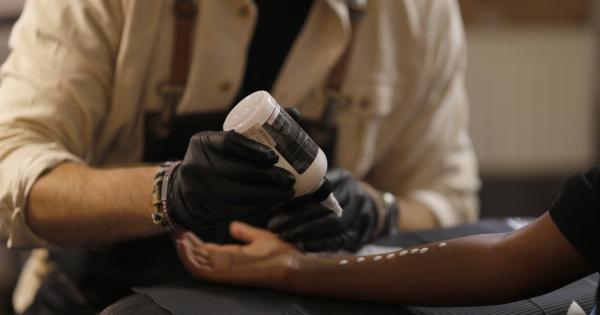Tattoos have become increasingly popular over the years, with people getting inked to express themselves, commemorate special memories, or simply for aesthetic reasons.
However, as time goes by, some individuals may regret their tattoo choices and seek tattoo removal options. Fortunately, advancements in technology and techniques have made it possible to effectively remove tattoos. In this article, we will explore various tattoo removal techniques used by experts, their pros and cons, and how they work.
1. Laser Tattoo Removal
Laser tattoo removal is currently the most commonly used and effective method for removing tattoos.
This technique involves using intense laser beams to break down the tattoo ink into microscopic particles, which are then gradually eliminated by the body’s immune system. Laser tattoo removal can effectively remove tattoos of all colors, but it may require multiple sessions depending on the size, location, and colors of the tattoo.
2. Dermabrasion
Dermabrasion is a technique that involves physically removing the top layers of the skin, where the tattoo ink resides. The process typically involves using a high-speed rotary device with abrasive materials to scrape away the tattoo ink.
While this method can be effective, it is known to be more painful and may result in scarring or changes in skin texture.
3. Tattoo Removal Creams
Tattoo removal creams are another option for those looking to remove their tattoos. These creams often contain bleaching agents or acids that aim to fade the tattoo over time.
However, it’s important to note that tattoo removal creams have varying levels of effectiveness, and complete removal may not be possible with this method. Additionally, they may cause skin irritation or allergic reactions in some individuals.
4. Surgical Excision
Surgical excision involves physically removing the tattooed skin and stitching the surrounding skin together. This method is typically reserved for small tattoos or cases where other removal techniques have not been successful.
Surgical excision may result in scarring and requires a healing period.
5. Saline Tattooing
Saline tattooing, also known as saline tattoo removal or non-laser tattoo removal, involves injecting a saline solution into the tattooed area. This process helps to break down the tattoo ink and encourages its removal over time.
While saline tattooing can be effective, multiple sessions are usually required, and it may not completely remove the tattoo.
6. Intense Pulsed Light (IPL)
Intense Pulsed Light (IPL) therapy uses high-energy light pulses to target and break down the tattoo ink. This method can be effective for certain types and colors of tattoos, but it may not be as successful as laser tattoo removal.
IPL therapy may also cause skin discoloration or require multiple sessions.
7. Cryosurgery
Cryosurgery involves freezing the tattooed area with liquid nitrogen or another freezing agent and then removing the treated skin. This method is more commonly used for smaller tattoos and may cause skin discoloration or scarring.
8. Chemical Tattoo Removal
Chemical tattoo removal is a technique that involves applying a chemical solution to the tattooed area, which helps break down and fade the tattoo over time.
This method may require several sessions and can cause skin irritation or pigmentation changes.
9. Radiofrequency (RF) Tattoo Removal
Radiofrequency (RF) tattoo removal uses heat energy to break down the tattoo ink. This technique is more commonly used for lighter-colored tattoos and may require multiple treatments for optimal results.
RF tattoo removal may cause skin irritation and discoloration.
10. Excimer Laser
The excimer laser is a specialized type of laser that produces high-energy ultraviolet (UV) light. This method targets and breaks down the tattoo ink without affecting the surrounding skin.
However, excimer laser tattoo removal is more suitable for lighter-colored tattoos and may not be as effective for darker or multicolored tattoos.
Conclusion
When considering tattoo removal, it is crucial to consult with a qualified and experienced professional to determine the most suitable technique for your specific tattoo.
Each removal method has its own advantages and limitations, and the effectiveness can vary depending on factors such as tattoo size, color, and individual skin characteristics. Laser tattoo removal, currently the most popular method, offers effective results for various tattoos, while other techniques may be better suited for specific cases.
Whichever method you choose, it’s important to be patient and understand that complete removal may require multiple sessions and proper aftercare.

























